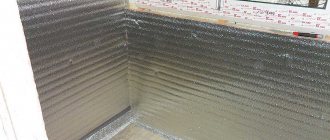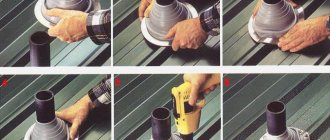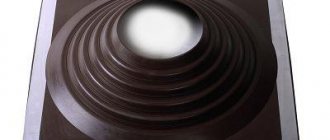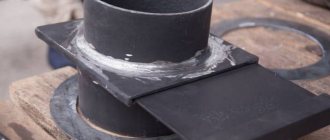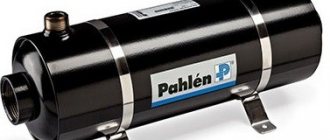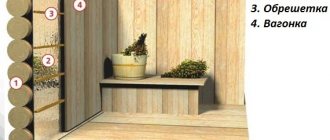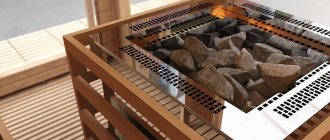The service life of heating sources, boilers, stoves and fireplaces solely depends on the method and material of chimney sealing. This operation is mandatory for every smoke removal system, since even the most high-quality installation of boiler equipment does not guarantee the absence of gas contamination in the premises due to the penetration of flue gases. Leaks in gas ducts can be caused by temperature deformation, leading to ruptures and cracks in the structure. A leaky gas exhaust system is not capable of creating working draft in the boiler unit. As a result, soot accumulates intensely in the pipe itself. This has the potential to become a prerequisite for a fire in the chimney. In order to counter this dangerous phenomenon, you need to know how to seal the chimney.
Purpose of chimney sealing
In order to prevent smoke from leaking through cracks, sealing the chimney is an indispensable condition for its functioning. High-tech heat-resistant seals are used to seal the joint seams of various elements of prefabricated chimneys. In addition, they are used for emergency repair of leaks formed during the operation of heating sources in winter, when it is not possible to disconnect the boiler and replace damaged areas.
Such materials are used to seal cracks in a classic chimney made of brick. Previously, traditionally, clay was used for this, but it is short-lived. In addition, heat-resistant pastes are used to treat the exhaust pipes to the roof - this protects the rafter system from getting wet and rotting.
Installation technology for corrugated stainless steel pipes
It should be noted that the installation of corrugated pipes is a simple process. Thanks to the variety of types of fittings, it is quite possible to assemble any system yourself, without the involvement of specialists. The main thing is to follow the sequence of technological steps during the installation process and the correctness of the work performed, which will ultimately allow you to obtain a strong, reliable and durable pipe connection.
The installation technology itself requires a clear sequence of certain actions:
Thanks to the variety of types of fittings, it is quite possible to assemble any system yourself, without the involvement of specialists
How the sealant works
All types of sealants for work in high-temperature zones are divided into 2 fairly large categories - heat-resistant based on silicone materials and heat-resistant with silicate technology. They differ in content and acceptable operating properties. All sealing materials can be divided into several types:
- silicone or silicate technology;
- by content: from one component or two;
- according to temperature indicators: temperature-resistant sealants and heat-resistant.
How the sealant works
All heat-resistant polymers are applied to the defective area between the chimney and the roof, after which they harden or polymerize under the influence of the atmosphere for some time. For home use, one-component kits are used - they harden more slowly, making it easier to correct any errors during application. In industrial production, binary sets are used in which the paste is mixed with a hardener.
Processing options
In the field of maintenance and restoration of chimney ducts, traditional materials have long ceased to be relevant. They are being replaced by polymer-based products. With their help, sealing a stainless steel chimney becomes as reliable as possible and maintains the result obtained over a long period of operation.
Chimney treatment can be done in two ways.
The first method involves applying PEK-1 paste, made on the basis of diane epoxy resin, which can be converted into a polymer having a spatial, network structure, onto the inner walls of metal pipes. The paste turns into a solid if a special hardener made using an aromatic polyamine is used when performing work.
Criterias of choice
Before you make a choice about how to seal your chimney, you need to understand that effective means of protection in the smoke ventilation system are not cheap. You should not save your money on heat-resistant sealants. It is safer to purchase these materials from popular brands and in large shopping centers, but it is recommended to keep your receipt. High molecular weight silicone is an expensive material and sometimes there are counterfeits on the Internet.
There is a simple option for checking the material than sealing the gap. If several bottles are purchased, then squeeze out a little of the substance from one, wait until it hardens, and set it on fire. Real silicone is difficult to ignite and burns with the release of a mixture of dark and light soot - hydrocarbons and silicon oxide. Fake sealant, usually containing acrylic and PVC, burns and releases only black soot.
It should also be noted that heat-resistant sealants for furnaces and flues are sold in tubes for a construction gun. If the store recommends polymer in classic tubes, most likely it is all a sealing material for cars; it is acidic in nature and is absolutely not suitable for heating devices and gas ducts. In this regard, carefully study the instructions on the packaging before sealing a stainless steel chimney.
When studying, you need to especially pay attention to the following characteristics:
- Permissible temperature. It must meet the operating conditions in the hot zone.
- Working environment. The sealing material must be neutral.
- Manufacturer's brand. Popular models of heat-resistant sealants are Penosil up to 1300 C, Makroflex up to 260 C, and domestic “Moment Germent”.
- Price. Silicone polymers are much cheaper than silicate ones.
Application rules
To ensure that the tightness of the connection does not cause any complaints, it is important to follow some rules when applying sealant:
- The area where the sealant is applied is cleaned of dust and degreased. For silicone products, the application site should be thoroughly dried. For fireproof ones, moisten with water.
- You should work with gloves, avoiding contact of the product with your skin. If this happens, you should rinse the skin with plenty of water.
- For complete hardening of the insulators, you should wait 24 hours with the first firebox.
- It is necessary to conduct a test fire to check the sealing and final fastening of the sealing materials.
- You should start working with any composition only after carefully studying the manufacturer’s recommendations.
Types of sealants
One-component sealants are made from a single ingredient and do not require mixing of the elements before performing the sealing procedure. This makes them easy to use and in demand among the owners of individual cottages, who appreciate the quality of such material for insulation work.
Binary or two-component, before work you will need to mix, exactly following the ratios noted in the annotation. At the same time, the prepared product must be completely consumed within a few hours after mixing. This method is not very suitable for sealing seams at home; as a rule, it is used by highly professional builders.
Silicone materials
For convenience and ease, the chemical industry produces a wide range of silicone seals. Such sealants are divided into:
- For acidic ones. When heated and combined with certain elements, acetic acid is released. They should not be used on items that are vulnerable to rust. Due to the above, connections are formed that prevent the optimal operation of the chimney, and its sealing is disrupted.
- Alkaline sealants.
- Heat-resistant silicate-based sealants can withstand fairly high temperatures. They are most used in areas with open flames. They can also be used in leakage areas of heating boilers and installation areas.
At the moment, an adhesive-sealant is presented on the construction markets, capable of being used in very difficult areas, where ordinary material is not tightly fixed. In terms of characteristics, the glue is no worse than similar sealants, and in some ways it is even more advanced. As a result of its use, the strength of the assembly is achieved, a very long-term joint appears, which is practically not affected by external factors.
Heat-resistant products
Heat-resistant sealants are produced on the basis of silicones - organosilicon oxygen-containing syntheses and can withstand ambient temperatures up to 300 C, which exceeds absolutely all conventional elastic seals. They have a long service life, elastic, inert in chemical environments, moisture-proof, very stable to biological influences, solar radiation, capable of functioning under rapid changes in temperature conditions, non-toxic and environmentally friendly.
Heat-resistant silicones are produced in the form of a red-brown paste. The sealant is colored by iron oxides. Design temperatures range from 180 to 310 C, this information is indicated on the packaging.
Silicone use area: sealing the external areas of the chimney, structural joints of the chimney and roof, blind cracks in brick areas, sealing steel pipes, as well as stainless steel structures. A special advantage of heat-resistant sealants is their elasticity. The width of possible compaction is up to 6 mm, the polymerization period is up to 25 minutes. Compaction is performed at positive air temperatures, no more than 45 C.
This sample of sealing materials has a silicone base with the addition of iron oxides. Such additives with a reddish tint not only increase the temperature resistance of the sealant, but also make it inconspicuous when treating brick chimneys. They keep the sealed gap tight for a long time.
Heat-resistant seals
They are used for sealing and repair work on the internal walls of the smoke ventilation system, combustion chambers, brick pipe ducts, wells, joining seams of cast iron and metal parts with the masonry of the heating source, mounting points for sandwich chimneys use fire-resistant silicate polymers operating in a temperature environment of up to 1200 C and short-term – including 1500 C.
Silicate sealing materials are distinguished by black or black-gray color and viscous consistency; they harden within 20 minutes after surface treatment is completed. The seam width is up to 20 mm. Heat-resistant silicates form a low-elastic compound. The ambient temperature during processing operations should be between 1 and 40 C.
The chemical industry has enterprises that produce specific heat-resistant compounds for lining heating devices and chimneys with thermal slabs: fireclay, clinker and porcelain stoneware, as well as facing stone. Typically, they are all produced on the basis of silicates and contain liquid glass, clay, cement, plasticizers and polymer additives.
Such consistencies tolerate temperatures ranging from -25 to +200 C and even more. The industry also uses other high-temperature similar compositions; they seal leaks in large volumes, and drying joints requires powerful heating, so they have not gained popularity in everyday life.
Stainless Steel Corrugated Pipe Fittings
Success in installing a water supply or heating system using corrugated stainless pipes depends on the tightness of the connections. The smallest leak can not only entail financial costs, but also pose a danger to human health and life. To ensure maximum reliability of connections, special fittings for steel corrugation are used.
Success in installing a water supply or heating system using corrugated stainless pipes depends on the tightness of the connections
Fittings are mounting parts of connecting fittings that perform a number of functions:
To connect individual parts of utilities to each other, brass fittings are most often used, which, depending on their purpose, can have different diameters, cross-sectional shapes and configurations. Such products consist of a body, a union nut, a plastic or steel stop ring and a silicone gasket that tightly seals the flexible pipe.
Types of fittings for corrugated stainless pipe
There is a wide range of fittings. They are conventionally divided into two main groups:
The fittings are divided into the following types: coupling, adapter, rotary angle, plug, tee, cross
The type of connecting fittings is selected according to the goals set, in accordance with the total cost of the project, taking into account the diameter of the pipes and installation conditions. The material for manufacturing can be metal or plastic. Metal fittings are more convenient and practical, which is why they are especially popular. Stainless steel and brass are used for their production. Plastic fittings are used at the junctions of combined systems, as well as for connecting to central lines. For example, they are used to connect corrugated pipes with polypropylene pipes.
Depending on the functions performed, fittings are divided into the following types:
Fittings are conventionally divided into two main groups: seamless and electric welded
Rules and principles for sealing chimneys
When working with two types of polymers, it is necessary to prepare the surface of the flue: clean, remove dust and dirt, and degrease. Metal areas must be sanded with fine sandpaper for effective adhesion of the polymer material. The surface under the heat-resistant seal must be absolutely dry. The tube is inserted into the gun and a small amount of material is squeezed onto the edge to be sealed. They provide the opportunity to harden; the polymerization time is usually indicated on the packaging.
The base for the heat-resistant silicate polymer is prepared and slightly moistened. Carefully apply the sealant to seal the gap tightly and allow time to harden. Excess heat-resistant mass is removed before it petrifies. It is possible to pre-glue the length of the seam with masking tape, and then remove it after completion. Activities are recommended to be carried out during the warm period of the year.
Some important rules when using heat-resistant sealants:
- Work with silicate sealing components is carried out in a temperature range from +6 to +41 C.
- The desired connection result is achieved only in the case of rough and uneven surfaces. For this purpose, when used, the areas are pre-treated with grinding materials.
- The surfaces must be degreased with a solvent, after completing the stage, allow them to dry for 20-25 minutes.
- When the mass hardens in the areas where the sealant is applied, very strong and hard seams are obtained; for this reason, it is not recommended to use these heat-resistant kits for systems operating in conditions of high vibration.
- The remaining sealing material is removed with a damp rag, but only until the paste hardens. After polymerization, this will require the use of force and tools.
Is it possible to line with a polymer stocking?
Heat-resistant sealant for stoves, high-temperature sealant for chimneys
You can seal a stainless steel chimney not only with sealants, but also with the help of a FuranFlex polymer pipe. The peculiarity of the polymer stocking is that it consists of three layers:
- The thin-film sleeve inside is made of a material whose properties are similar to polyethylene, but at the same time elastic, like rubber, and resistant to high temperatures.
- The composite layer is made of fiberglass fibers and resins. The layer performs the function of reinforcement - it gives the pipe strength and rigidity. The main feature of the composite material is that when heated, it changes not only its dimensions, but also its structure.
- The outer shell is made of highly durable fabric. It performs several functions: determines the diameter of the pipe, protects the composite material from mechanical damage, and absorbs excess resin when heated.
FuranFlex polymer stockings are successfully used not only to restore the functionality of brick systems, but also the lining of stainless steel chimneys. Since the stocking is initially flexible, it can be inserted into a system of any complexity. Twists and turns when sealing are not a problem. The material is resistant to corrosion at high temperatures, has high strength and can last for several decades.
Popular manufacturers
There are quite a few companies producing pyrogenic sealants in the construction market today; the most famous brands include:
- The presented company produces both heat-resistant and heat-resistant sealing products. The heat-resistant material is made on the basis of red silicone acid paste, resistant to high temperatures up to 300 C. There is a heat-resistant modification of the material for Penosil-1500. This substance is black in color with a maximum operating temperature of up to 1500 C.
Penosil-1500 - The brand sells heat-resistant products from the Polish company Selena Group. The sealants of this model can withstand ambient temperatures up to 1250 C. The presence of a fiberglass mixture in the material’s formulation creates smoke- and gas-tight seals, thanks to which the sealant is in deservedly high consumer demand among craftsmen.
Sealant from the Polish company Selena Group - Soudal C. A Belgian company that produces a wide range of sealing materials, including pyrogenic ones, for example, Soudal Calofer, Fix All and some others. Soudal C.
High-temperature sealants are considered an indispensable product in the construction of smoke ventilation systems for various boiler equipment, stoves and fireplaces. They have many significant positive qualities and specific properties. Therefore, on the eve of purchasing a sealant, it is necessary to carefully familiarize yourself with its parameters and the advice of qualified specialists. All of the above makes it possible to insure against miscalculations and make the best selection of sealant, in which the tightness of the chimney system will be guaranteed.
Scope of use of stainless steel pipes
First of all, stainless steel pipes are used in the construction of water supply, heating and sewerage systems. It is here that the pipeline is constantly exposed to water, and ordinary metal products are destroyed and rusted. Limescale deposits form on the inner walls of conventional steel pipes, which gradually narrows their diameter. As a result, communications must be repaired or replaced.
Stainless steel pipes are completely free of these disadvantages. The only thing that somewhat limits their widespread use is the high price. Therefore, they are more often used in large centralized supply pipelines.
At enterprises producing food for the population, food grade stainless steel pipes are in great demand. These products are not only resistant to corrosion, but also to the formation of plaque from microorganisms and fungi.
This useful quality is ensured by a perfectly smooth inner surface. Through the pipes
move food solutions and prepared food products without any damage to their quality. Finished products, for example, milk or lemonade, are bottled through stainless pipes, which cannot replace plastic or metal products.
Stainless steel pipes are used in the construction of large pipelines for the delivery of oil and gas. The well-known streams that transport fuel to many countries around the world are made using this technology. At chemical plants, many tons of aggressive chemical solutions, including alkali and acid, are distilled through these pipes, without the slightest damage to them.
Cement
Sealing a chimney with cement has been a long-forgotten method since the last century. However, it is still used today. The binding agent in this case is an asbestos-cement mixture in a 1:1 ratio.
The mixture is prepared by hand as follows:
- I fill the asbestos with water and bring it to a homogeneous mass;
- A homogeneous and swollen mass of asbestos is mixed with a portion of cement;
- The mixture is coated with the joint between the roof and the chimney;
- Operation of the chimney system is possible after the sealing mixture has completely dried.
Materials used
The materials used for sealing are divided into three types, each of which has its own advantages and disadvantages.
It is a roll or shortened fibers. Positive qualities of cotton wool
:
adheres tightly to surfaces;
resistance to physical impact (shock, vibration);
resistance to chemical attack;
Cotton wool is the most common material for insulation
Roll filters
They are a mullite-siliceous composition that is included in the fibers of the composition. Positive qualities of roll filters
:
it is permissible to use inorganic glue;
the mechanical fastening can be firmly fixed.
On our website you can find contacts of construction companies that offer country house design services. You can communicate directly with representatives by visiting the “Low-Rise Country” exhibition of houses.
Asbestos and kaolin boards
In production, mullite-siliceous fiber is used. The disadvantage of the plates is their immunity to alkalis and acids at high temperatures. To eliminate the deficiency, additional insulation will need to be installed. Positive qualities of slabs
:
low density, but higher than that of cotton wool;
resistance to physical impacts, such as vibrations;
resistance to steam, water and oils;
resistance to melting non-ferrous metals;
electrical insulating properties will be maintained at temperatures up to 800 degrees Celsius.
General concepts
The quality functioning of the chimney directly depends on its tightness. The flow of air with gases must enter it only from the heating device. If there are additional cracks or holes through which suction occurs, this can create significant problems and lead to a fire. If the tightness of the burners of some boilers is insufficient, they cannot operate fully. From this follow the main reasons for the need to use sealant:
- elimination of cracks in brick combustion chambers;
- ensuring the tightness of chimney pipes;
- External finishing of fireplaces and stoves;
- fixing special gaskets to the walls or fittings of stoves;
- waterproofing the pipe passage through the roof.
In each of these units, the operating temperature may differ, this affects the choice of sealant that will be used in the process
Therefore, it is important to understand the types that exist
So which one should you choose?
This review is published to make it easier for you to choose the sealant or adhesive that best suits your situation. It contains sealants and adhesives from different manufacturers and price categories, as the popularity of the compositions decreases
Attached to the review will be a small reminder of what properties of the glue and under what circumstances you should pay attention first. So, if you only need to glue a tin screen onto a heating radiator, there is no point in using glue with a tensile strength of 100 kg - there will definitely not be such loads
In this case, it is better to pay attention to durability and resistance to external influences. There is also no point in fixing a leak in the radiator of your favorite car with a sealant designed for 1500°C. Now a small list of the main properties of sealants and adhesives will be given, which will help you understand a little about what you should pay attention to.
Types of high-temperature adhesives and heat-resistant sealants
Characteristics of heat-resistant adhesives
For heat-resistant adhesives, the main quality is, of course, heat resistance itself, that is, the preservation of its properties under temperature changes. The next equally important characteristic is the level of strength. Next comes adhesion; it differs with different adhesives and sealants and with different materials.
Next, depending on the operating conditions, we pay attention to resistance to aggressive substances, weather conditions and mechanical stress. Also, the hardening time, which is usually indicated on the packaging, sometimes plays an important role.
Types of heat-resistant adhesives
All adhesives according to their composition are divided into 2 main groups - natural and synthetic. Natural composition includes elements from the groups of silicates and carboranes. Synthetic ones include various polymers. Synthetic adhesives are often two-component and consist of the glue itself and a hardener (a substance that activates polymerization).
- based on epoxy polymers - retain properties for 30,000 hours at temperatures up to +150°C, suitable for gluing almost any materials;
- based on organosilicon compounds (silicones) - retain properties for 2000 hours at temperatures up to +400°C, are suitable for repairing fireplaces, stoves and chimneys, and are also used in repairing car engines and sealing various components and assemblies. operating at high temperatures;
- based on organoboron compounds (carboranes) - up to 1000 hours at temperatures of +600°C and above, are used mainly in the repair of stoves, fireplaces, chimneys and other similar structures, but some types of such adhesives have nevertheless found application in other areas;
- inorganic - a short period of time up to 2000 ° C, at lower temperatures - indefinitely, used mainly in structures using open flames.
Characteristics of heat-resistant sealants
As with adhesives, heat resistance, strength and adhesion are just as important for sealants. Only, unlike adhesive compositions, for which this criterion is less important than strength, sealants must also have elasticity and resilience. High-quality compositions must retain it throughout its entire service life and not lose it from exposure to temperatures, weather and other influences.
Types of heat-resistant sealants
- heat-resistant have an operating temperature of up to +300°C;
- heat-resistant sealants are able to maintain their properties at temperatures up to +1200°C.
Sealants, like adhesives, can be divided into natural and synthetic. This separation occurs on the same principle as with adhesives - depending on the components included in their composition.
In addition to what has been said, I would like to supplement our review with several more positions of adhesives and sealants, undeservedly forgotten by cruel statistics, but rightfully deserving of a place at the top of our list.
Do-it-yourself waterproofing of roof pipes
To complete the work you will need the following materials:
- Polymer-bitumen mastic.
- Metal aprons.
- Heat resistant sealant.
Chimney sealing diagram
Now let’s look at how to waterproof a pipe on a roof:
- Waterproofing a chimney on the roof begins with making a hole in the roofing pie for installing a fire duct. It is easiest to purchase it ready-made, but in some cases you have to make it yourself. The waterproofing film or membrane at the passage site is cut crosswise, the edges of the film are bent upward. A box is installed, to which the edges of the film are glued using bitumen mastic. It is pressed tightly around the entire perimeter; another layer of mastic must be applied on top.
- Then metal aprons are installed on the prepared sheathing to drain water. The dimensions of the aprons should be such as to block the passage on all sides by 20-30 cm. The overlap on the pipe should protrude at least 10 cm above the roofing. The apron is attached around the perimeter of the pipe with dowel nails, all cracks and gaps are carefully filled with heat-resistant sealant. Some craftsmen advise installing aprons with the upper end into a pre-drilled groove and then coating the gap with sealant.
- After this, the roofing covering is installed. Waterproofing a pipe on a roof made of slate (ondulin) or corrugated sheeting begins with cutting a hole in the roofing material, which should follow the contour of the fire duct in size. Installation is carried out over the aprons, trying to keep the gaps to a minimum. Waterproofing a pipe on a metal roof is similar to waterproofing a corrugated roof (article about waterproofing a metal roof).
- The last step is to install an additional apron over the roof. It can be either metal or made of polymer materials specially produced for such purposes, for example, Wakaflex waterproofing tape. It has a sticky layer, with the help of which it is reliably glued to the pipe and to the roofing, and is rolled with a roller. The joints are located in the direction of water flow.
Fireproof box for round pipes. After installation, the seams are sealed with sealant
Various options for sealing pipes (waterproofing a chimney on a slate roof)
Sealing with bitumen mastic
